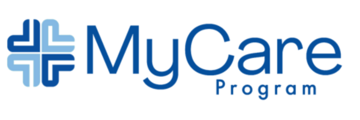Brief Overview: Mixed connective tissue disease (MCTD) is a systemic rheumatic disease characterized by the presence of high-titer anti-U1 ribonucleoprotein (RNP) antibodies in combination with clinical features commonly seen in systemic lupus erythematosus (SLE), systemic sclerosis (SSc), rheumatoid arthritis (RA), and polymyositis (PM). It often takes several years before enough overlapping features have appeared to be confident that MCTD is the most appropriate diagnosis. The distinctive overlap features of SLE, SSc, inflammatory arthritis, and PM commonly appear sequentially over time. Thus, in its early stages, MCTD may present with features of undifferentiated connective tissue disease (UCTD).
Prevalence: There is limited information regarding the prevalence and incidence of mixed connective tissue disease (MCTD). MCTD occurs worldwide and affects all races, with a peak incidence in adolescence and the 20s.
Estimates of the annual incidence of MCTD range from 0.2 to 1.9 per 100,000 adults. MCTD is much more common in females than males, although estimates of the difference range widely (from 3:1 to 16:1).
Etiology: Mixed connective tissue disease is an autoimmune disorder, although the cause isn't known. In autoimmune disorders, your immune system — responsible for fighting off disease — mistakenly attacks healthy cells.
In connective tissue diseases, your immune system attacks the fibers that provide the framework and support for your body. Some people with mixed connective tissue disease have a family history of the condition. But the role of genetics in the disease remains unclear.
Risk Factors: Mixed connective tissue disease can occur in people of any age. However, it appears to be most common in women under the age of 50
Commonly Associated Conditions:
- Skin involvement – lupus-like features (including chilblains, discoid plaques, malar rash, panniculitis, mucus membrane involvement)
- Cardiac involvement (including pericarditis, accelerated atherosclerosis, cardiac conduction abnormalities, cardiac fibrosis)
- Renal/kidney involvement (including membranous nephropathy, nephrotic range proteinuria, tubulointerstitial nephritis, mesangioproliferative glomerulonephritis)
- Neurologic involvement (including trigeminal neuralgia, headaches, sensorineural hearing loss, and others may present)
- Scleroderma-like features (including Raynaud’s phenomenon, digital vasculopathy (swollen digits and occasionally total hand edema))
- GI involvement, GI dysmotility
- Interstitial lung disease (ILD)
- Pulmonary arterial hypertension (PAH)
- Arthritis
- Sicca – characterized by dry eyes and mouth
- Myositis
Common Medications: Medication is typically directed at the specific disease manifestations/symptoms. Each person’s treatment plan should be tailored specifically to them. What is appropriate for someone, may not be appropriate for someone else. Some common medications may include, but are not limited to:
- Hydroxychloroquine
- Glucocorticoids
- Calcium channel blockers
- Immunosuppressants
- Anti-hypertensive medications
Common Labs, Imaging, and Tests:
- Labs:
- CBC
- Serum creatinine level and urinalysis with urine sediment
- ANA
- Anti-U1 ribonucleoprotein antibodies
- Erythrocyte sedimentation rate and/or C-reactive protein levels
- Nailfold capillary microscopy
- Transthoracic echocardiogram
- High-resolution chest CT
- Pulmonary function test (PFT)
Common Symptoms: The early clinical features of mixed connective tissue disease (MCTD) may include:
- Puffy/swollen fingers/hands
- Rash – red or reddish brown patches can appear over the knuckles
- fatigue
- arthralgias
- myalgias
- low-grade fever
- Raynaud phenomenon
- General feeling of being unwell
Common Treatments:
- Medications (see discussion above)
- NSAIDs may be appropriate
- Monitoring for multi-system/multi-organ involvement
- Treatment will be tailored to patient specific symptoms and organ involvement
Physical Findings:
- Puffy or swollen fingers and/or nonpitting edema of the hands
- Skin thickening, either diffuse or limited to the hands, face, feet, and forearms
- Abnormal nailfold capillaroscopy with SSc pattern
- Skin lesions consistent with a malar rash or discoid lesions
- Polyarticular arthritis
- Decreased or abnormal breath sounds that may indicate a pleural effusion, pneumonitis, or ILD
- Proximal muscle weakness
Potential Complications and Contraindications:
- Development of a true overlap syndrome, which simultaneously incorporates features of SLE, scleroderma, PM, rheumatoid arthritis (RA), and Sjogren’s disease
- Interstitial lung disease development or progression
- Cardiopulmonary disease development or progression
- Pulmonary hypertension
- Heart disease
- Kidney damage
- Digestive tract damage
- Anemia
- Tissue death
- Hearing loss
- Nerve damage
General Health and Lifestyle Guidance:
- Take nonsteroidal anti-inflammatory drugs (NSAIDs) to relieve mild pain and inflammation; these medications include ibuprofen (Advil, Motrin IB, others) and naproxen sodium (Aleve) – always discuss this with your healthcare provider first to make sure this is safe for you
- Protecting hands/feet from the cold
- Reduce stress if possible
- Encourage smoking cessation
- Stay physically active with gentle exercise
- Maintain follow-up with all healthcare providers and specialists as directed
- Use sun protection due to potential photosensitivity
Suggested Questions to Ask Patients:
- Have you noticed color changes in your fingers in the cold?
- Are you experiencing fatigue or muscle weakness?
- Do you have any shortness of breath or chest pain?
- Have you had new or worsening joint pain or swelling?
- Are you tolerating your medications well?
Suggested Talking Points:
- MCTD requires ongoing management
- Discuss the importance of regular lab monitoring and follow-up visits as directed by your healthcare team
- Emphasize the need to report new symptoms promptly to your healthcare providers
- Symptoms may flare and remit over time
Resources:
